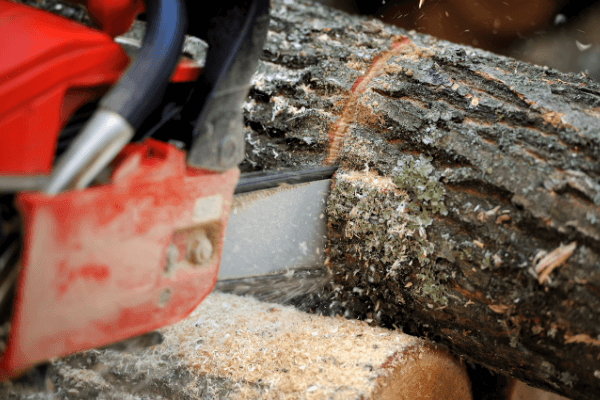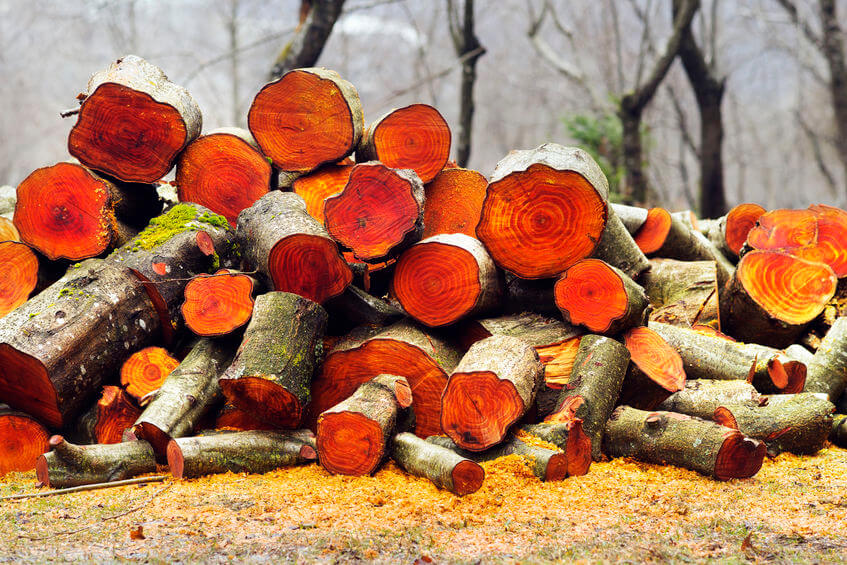- Home
- Heating With Wood
- Firewood Storage
Firewood Storage
This post may contain affiliate links so I earn a commission.
The concept of firewood storage is pretty simple.
Properly stored firewood will last longer and burn hotter than wood that's been neglected or ignored.
Whether you buy your firewood or cut it yourself, eventually, you will need a place to store it until it's ready for use.
Here's the good news......There's no single right answer for the best way to store firewood.
Everyone's firewood storage situation is different.
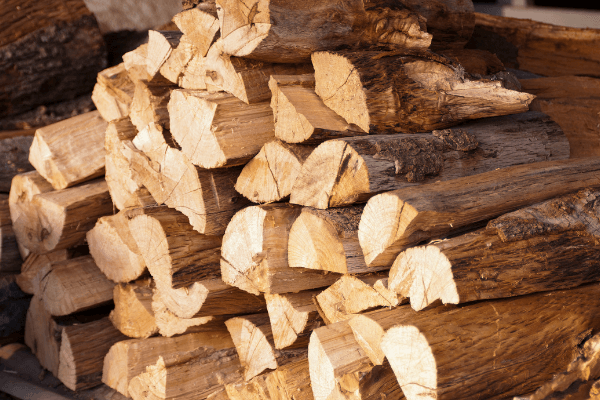
The amount of space you have available and how much wood you burn will both dictate your individual storage needs.
Proper firewood storage can be broken down into three basic steps:
First, keep it covered.
Second, keep it off the ground.
Third, keep the air flowing around the wood.
To learn how to properly accomplish each step, let’s look at them in more detail.
Keep It Covered
A roof, tarp, or commercial firewood cover can all be used to keep rain and snow from accumulating on your stack of firewood.
It's important not to completely cover your firewood on all sides because air needs to penetrate the wood to dry it out.
If you use a tarp or another similar device, only cover the top portion of the wood stack and about a foot or two on the sides.
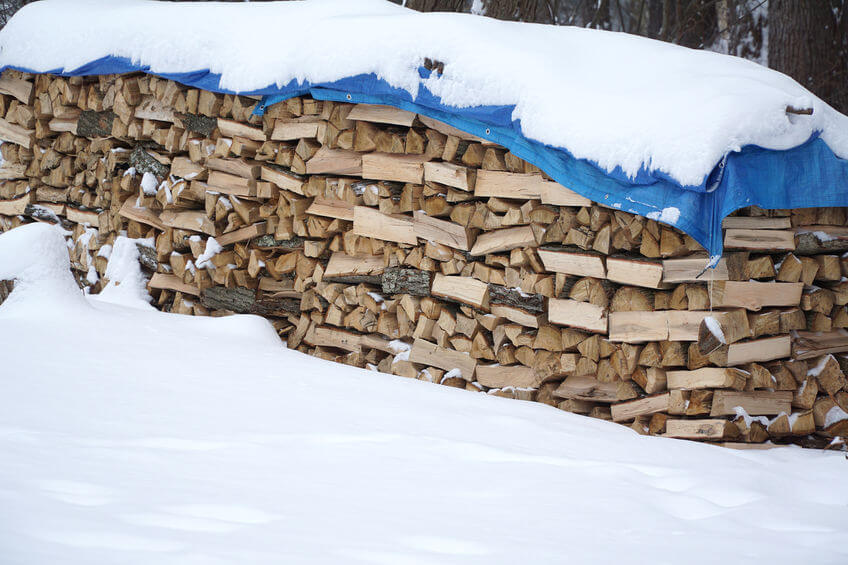
This will keep water from accumulating on top of the wood while still allowing air circulation throughout the stack.
Keep It Off The Ground - Firewood Storage
Elevating your firewood off the ground by just a few inches will keep it dry and reduce the number of insects that try to make your stack of firewood their new home.
Firewood can soak up a lot of moisture directly from the ground if you don't stack it on some type of barrier.
Wooden pallets are one of the easiest things to stack firewood on.
They're sturdy, they keep the firewood off the ground, and you can find them for free at many local businesses or factories.
2x4's, landscaping timbers, or even symmetrical tree branches can also be used to elevate your wood off the ground.
Once elevated, air will flow under the stack that will speed up the drying process.
Keep The Air Flowing
Air circulation is vital for both seasoning green firewood and keeping seasoned firewood dry.
Choose an area that receives ample sunlight which will help dry out any wet firewood.
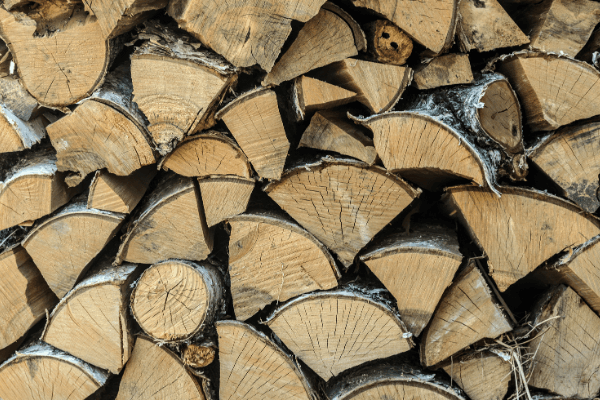
If you are stacking multiple rows of wood, leave about 12 inches of space between each row so the air can penetrate all sides of the wood.
Good air circulation will not only speed up the drying process, but it will reduce the amount of mold and fungus on your firewood.
How Long Can You Store Firewood?
If firewood is properly stored, it has an estimated 3-4 years before going bad while stored outside.
The recommended moisture content is between 15-20%.
That’s what many people consider the "sweet spot" for moisture content to make sure you’re getting the longest and cleanest burn possible.
If the wood is too dry, it burns out too quickly.
If it's too wet, it burns with a lot of smoke, producing half the amount of heat it would produce when dry.
When Do You Store Firewood?
Firewood storage should occur after it has been properly split into useable pieces.
Splitting the wood is very important when seasoning because it allow the wind to penetrate the wood from all sides instead of just the ends.
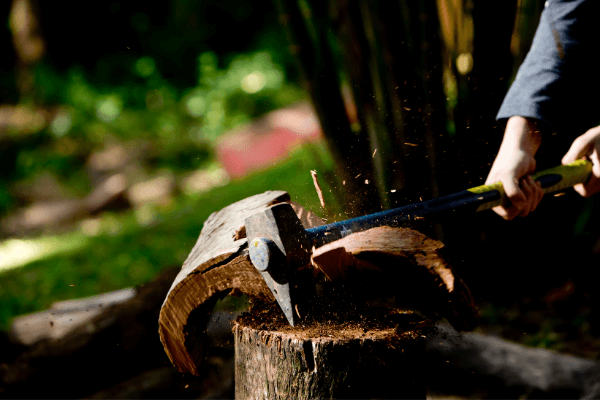
Large pieces of wood that are stored in the round and unspilt take years to dry out.
Unless the piece of wood is about the size of a grapefruit or less, it needs to be split before you store it, so the moisture content is at a safe and useable level.
Firewood Storage Indoors
Firewood can be temporarily stored indoors in a wood box if it’s already dry.
This minimizes the number of trips made to keep the fire burning and it’s a really nice feature when you don’t want to go outside at 11:00 pm to grab a few more pieces of wood to get you through the night.
A firewood box should hold 1-2 days worth of dry firewood, so you’re not keeping the wood stored inside for long periods of time.
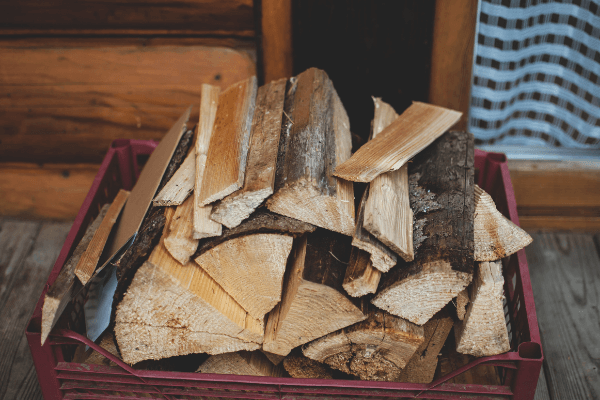
I always like to dry my firewood using a firewood shed, but if you don’t have the room or finances to build a shed, you can choose an area on your property that is breezy and dry.
For pest prevention, season the wood not less than 20 feet from the closest door to your home while it’s drying.
Wood attracts a lot of different pests ranging from carpenter ants to mice, neither of which you want to invade your home.
How To Identify Dry Firewood
As we mentioned earlier, it’s important to only store fully seasoned firewood, increasing its durability before going bad.
First, examine the edges of the logs.
If they are dark in color and have cracks, the wood is dry.
Also, compared to wet wood, dry wood is much lighter in weight.
When two pieces are hit together, a hollow sound is produced.
Furthermore, the wood is dry if the bark peels off easily. The presence of green color is evidence of wet firewood.
If wood gets too old, the only thing that will be affected is the amount of heat it produces when burnt.
I’ve burned a lot of wood that was dry, but it was down for a few years in the woods before I had a chance to cut it up and store it until it was ready to use.
You can still burn punky firewood as long as it’s dry.
The heat will be lesser than that of a recently seasoned firewood, and you’ll notice a lot more bark and debris falling off in your home, but’s it safe to use.
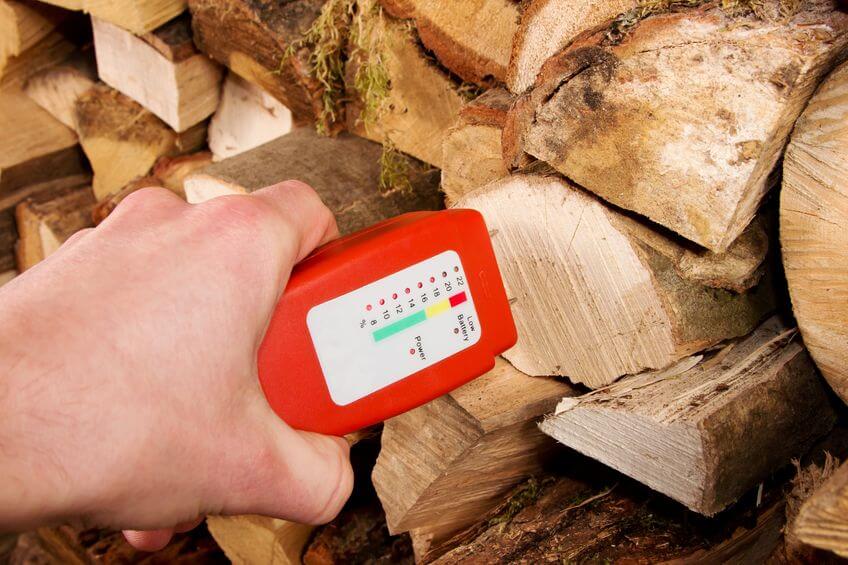
A moisture meter can be used to distinguish dry wood from wet firewood that’s not ready to be thrown in your wood stove.
Moisture meters are available online, at a wood stove retailer, or in most home stores.
A moisture meter has color codes, depending on the wood's moisture content, or they will contain a digital readout of the moisture content inside the wood.
Just remember when using a firewood moisture meter to check the middle of the split sections of wood and the ends.
A lot of times, the ends will have a lower moisture content because it’s on the outside edge, which is why it’s also beneficial to check the edges of the wood towards the middle of the split log.
Overall - Firewood Storage
Don't let your hard work or money go to waste by simply throwing your firewood into an uncovered pile.
Storing firewood outside is an efficient and practical way to dry firewood until it’s ready to be used.
Just remember to keep the top portion of the stack coverd, keep it elevated off the ground, and stack it in an area that’s going to receive the benefits of the warm summer sun and wind.
Keep these three basic firewood storage rules in mind, and you will be enjoying hot fires from dry firewood all winter long.

About the Author
Obsessed with firewood, Nick is behind over 350+ of Firewood For Life's articles, as well as countless reviews, guides and YouTube videos to help readers like you reduce heating costs and create the perfect fire.
